Hello friends
I suspect there’s always an element of instrumentalism involved when one artist looks at the work of another. An artist looks at art as an apprentice, asking what can I learn here? The questions we bring might be far-reaching: Can this artwork take me deeper into a question I am holding? Or maybe, Can it re-awaken me to something I’ve stopped noticing? They may be workmanlike questions, concerned with craft: How did they get that surface quality? Or professional: Nice framing! I wonder who did it?
I mention this by way of disclaimer. I’m no art historian, journalist, art critic, or theorist. I write about art when a shared fascination or a point of common interest means there’s something there that seems important for me to learn. I write about art to get deeper into questions I’m holding about my own work, even, perhaps especially, when these are questions more felt than worded. The task of finding those words is one of clarification, not just about the other artist’s work, but about my own.
Victoria Crowe’s exhibition at the Pier Art Centre in Stromness, “Touching the Surface: The Orkney Paintings” opened just last weekend. I’ve already been back a couple of times to revisit it, and will again. There is much for me to learn here. Indeed, I first met Victoria when she taught me drawing as a first-year undergraduate at Edinburgh College of Art where she was a part-time lecturer, and I have admired her work ever since.
Her career as a painter spans an illustrious fifty years and I won’t attempt an overview, as you can find out more on her website. But her earlier paintings of luminous snowfields and chilled winter skies seen through the delicate tracery of bare winter trees around her home in the Pentland Hills, south of Edinburgh, show the same line of enquiry that’s followed through into this new work.
The paintings of those Pentland hills and fields seem to hum with light, suffused with a wintry, fleeting beauty. Paintings of atmosphere as much as place, they vibrate with the cold blue luminosity of fading daylight, here and there touched with the fiery orange of low winter sun catching the tips of frosty twigs. They are hauntingly beautiful paintings of light on the cusp of darkness, a visible world just on the verge of disappearing from view.
Victoria came to Orkney twice in 2022, around the summer and winter solstices, when the balance between darkness and light is at its most dramatic at this Northerly latitude. She was resident at Linkshouse, a residency centre just a few minutes’ walk from my own studio in Birsay, and it was a delight to reconnect with her and partner Mike when they were here. The material she gathered in sketchbooks and studies during her short visits have now been worked up in her home studio into the series of paintings that have now returned to Orkney, and the questions Victoria asks through this new work are, quite literally, close to home for me.
The simple lines of Orkney’s landscapes and wide horizons focussed her attention, as it has mine, on the sky and the sea, on depth and spaciousness. The tracery of trees is replaced here by the shifting occlusions of cloud banks rolling in from the Atlantic. As before, it’s the quality of light and its shifting atmospheres that is her point of focus, but now the gleam of snowy fields has been replaced by the luminosity of wind-blown skies and glittering seas.
These paintings convey a sense of the sky as a deep space. Fat, dark bands of fluffy raincloud squat ominously low to the ground while tattered fragments of high cloud are flung upwards like shredded bits of paper in a storm, backlit by sun or moon.
Victoria manages to avoid sentimental romanticism by drawing us back to the physical materiality of paint on a surface; a sequence of studies of the full moon moving in and out of thick clouds are kept small-scale, on rough paper, so the physical presence of the paint, the gestural mark, and the surface on which it’s made, can’t be ignored. Perhaps this is why the exhibition is called, counterintuitively, ‘Touching the Surface’ when so much of the work on show here is paintings of the unsurfaced, untouchable sky.
In one painting that held me for a long time, two blunt, dark headlands nudge at a strip of glittering sea. A band of silver light illuminates the sea horizon that opens between them. Huge, dark bands of cloud obscure the light in a fading sky that dominates the canvas.
In Victoria’s earlier paintings, dusk is the moment where the seeable begins to sink away from us into darkness. Here, our attention is again drawn towards the point where our perception fails. Just as we know the fields and trees are still there invisibly folded into the night, here we know the sea extends beyond the horizon. We just can’t see it.
As the painter Agnes Martin pointed out, the horizontal line invites our eye to rest, but it also extends us outwards. The horizon is a line that’s not a line, a boundary that’s not a boundary but the point where our sight fails us. The sea continues, hidden from us by the curve of the earth. At the sea horizon, our all-too-human longing to grasp, to acquire, to understand, to keep, is thwarted. We are exceeded. And we know it.
In the talk Victoria gave at the Pier Art Centre the day after the exhibition opened, she mentioned being surprised to see how far around the horizon the sunset had moved between her visits, like the turning hands of a clock, making the passage of time and seasons visible. She reached for the words ‘mystical’ and ‘timeless’ more than once in relation to the Orcadian landscape.
It’s true that the seasonal dance of sky and sea, darkness and light, and the ancient stones of this long-inhabited landscape, make time something you can feel in Orkney. It's felt as both slow, deep and ancient in stone and land, and as an ever-present dance of wind and light, a freshly occurring moment of now. Victoria mentioned the poet Kathleen Raine as an influence, as also seeing landscape in these mystical, timeless terms. In a poem written towards the end of Raine’s long life she wrote:
It winds into the heart, That unbroken thread From present to past, Without to within, From seen to seer, Sky, garden, tree, bird Transmuted, transposed To memory, to pain These young leaves, these daisies, The dappling wind That glances on blades Of glistering grass Become what I am Who am the sum Of all I have lost, Who am the maker From greenness a joy, From wind, wisdom, From cold earth, gold, From gold of the sun. Life-blood of sorrow That sounds the heart. I am my past And future approaching Days unknown But of all these none Brighter nor dearer Than the wind and the daisies, The little hedge-sparrow Fearless and sun-glossed Searching the flower-bed Outside my window, Winged with time The ever-present Flitting and flaunting Its here and now Light into love, Leaf into loss. From "A Departure", in The Collected Poems of Kathleen Raine, Golgonooza Press
This poem weaves seer and seen, past and present, self and world, love and loss, ancient and fleeting together into a single, unified whole, one where the poet makes joy, wisdom, and gold, even as leaf gives way to loss. The flitting of a hedge-sparrow, fearless and sun-glossed in his tiny life, is only the more bright and dear for its fleetingness. Grief becomes its own consolation, a deepening into life, even as we recognise its fragile brevity. Though we may be the sum of all we have lost, it is through our own attentiveness to bird, to leaf, to glistering grass, learning fearlessness from the hedge sparrow, that we too can make from greenness a joy.
This, I think, is what will keep drawing me back to these paintings. Showing the familiar places of Birsay back to me through Victoria’s eyes, they are a reminder that quietly observing how the light moves through the world, taking time to watch its subtle changes as it suffuses the winter clouds with soft colour or sends glittering paths over the sea, is not idle escapism. It’s an act of veneration and thanksgiving for the world we have, however briefly we may have it.
The Life Raft Co-Working
Join us for a gently supportive creative co-working session on Zoom each Wednesday afternoon. Save the link as it’s the same each time.
Until next week
– Sam
Thank you so much for reading and listening. You can help the Life Boat reach more readers by clicking the heart icon at the top or bottom of this email, or use the speech bubble icon to join the conversation.





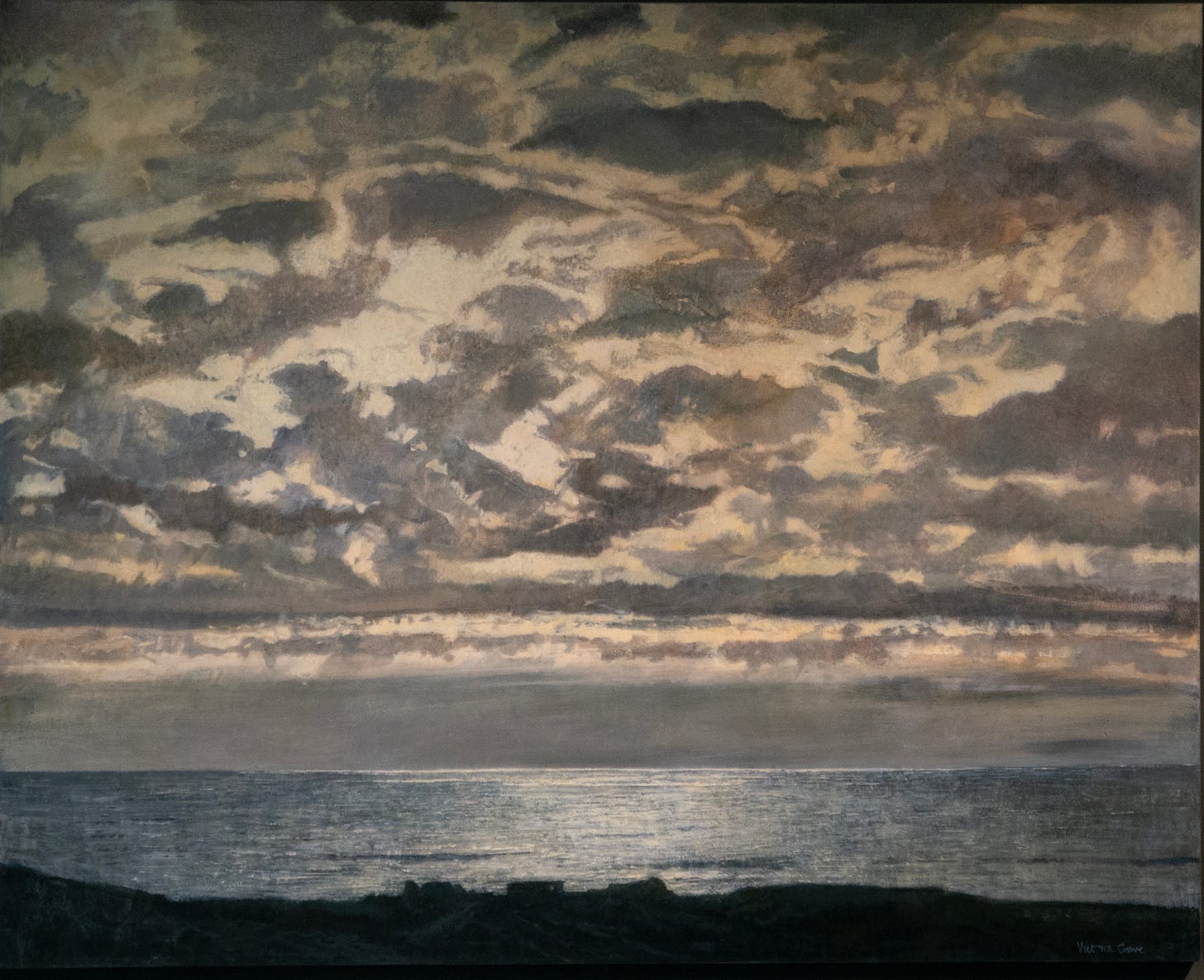
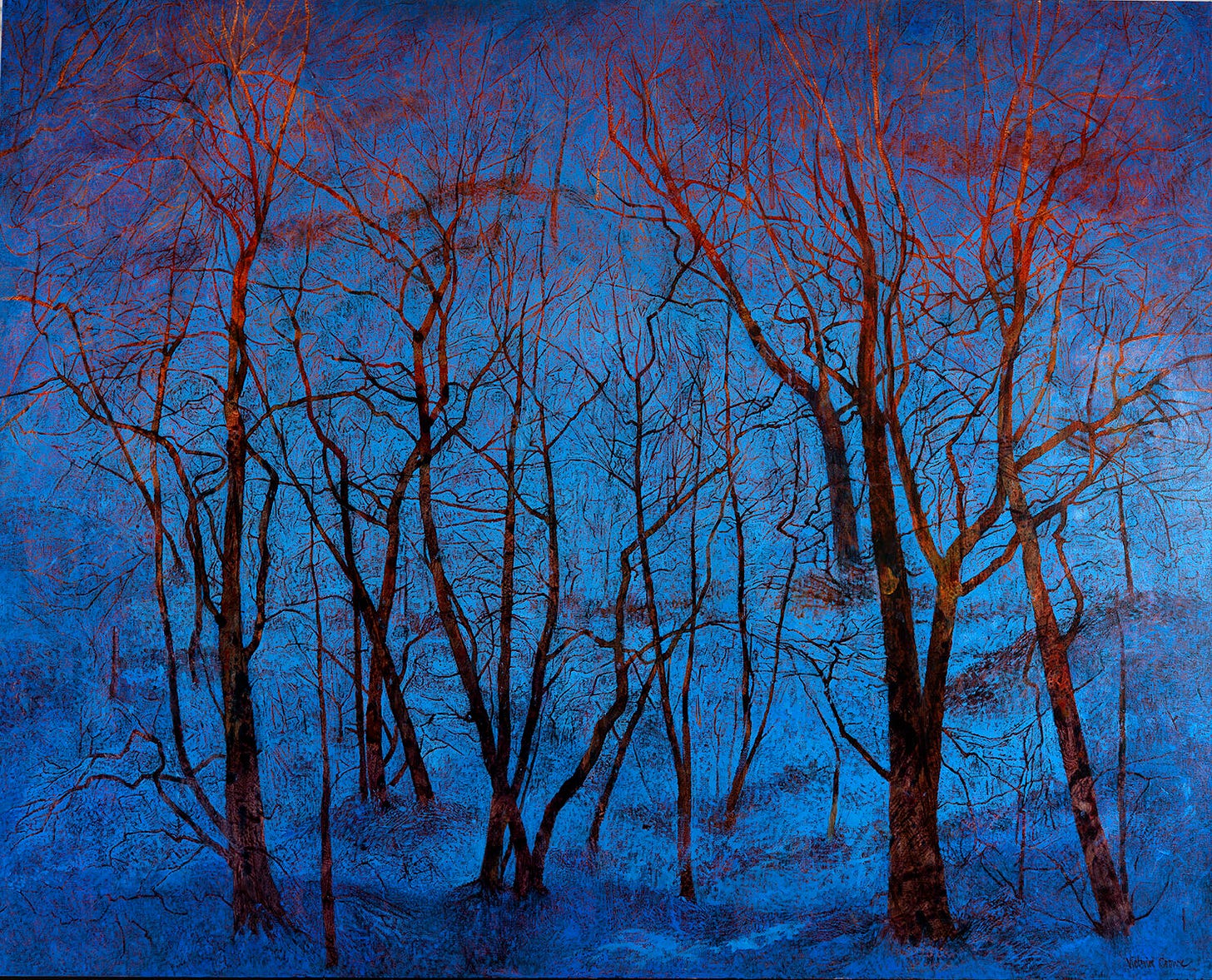
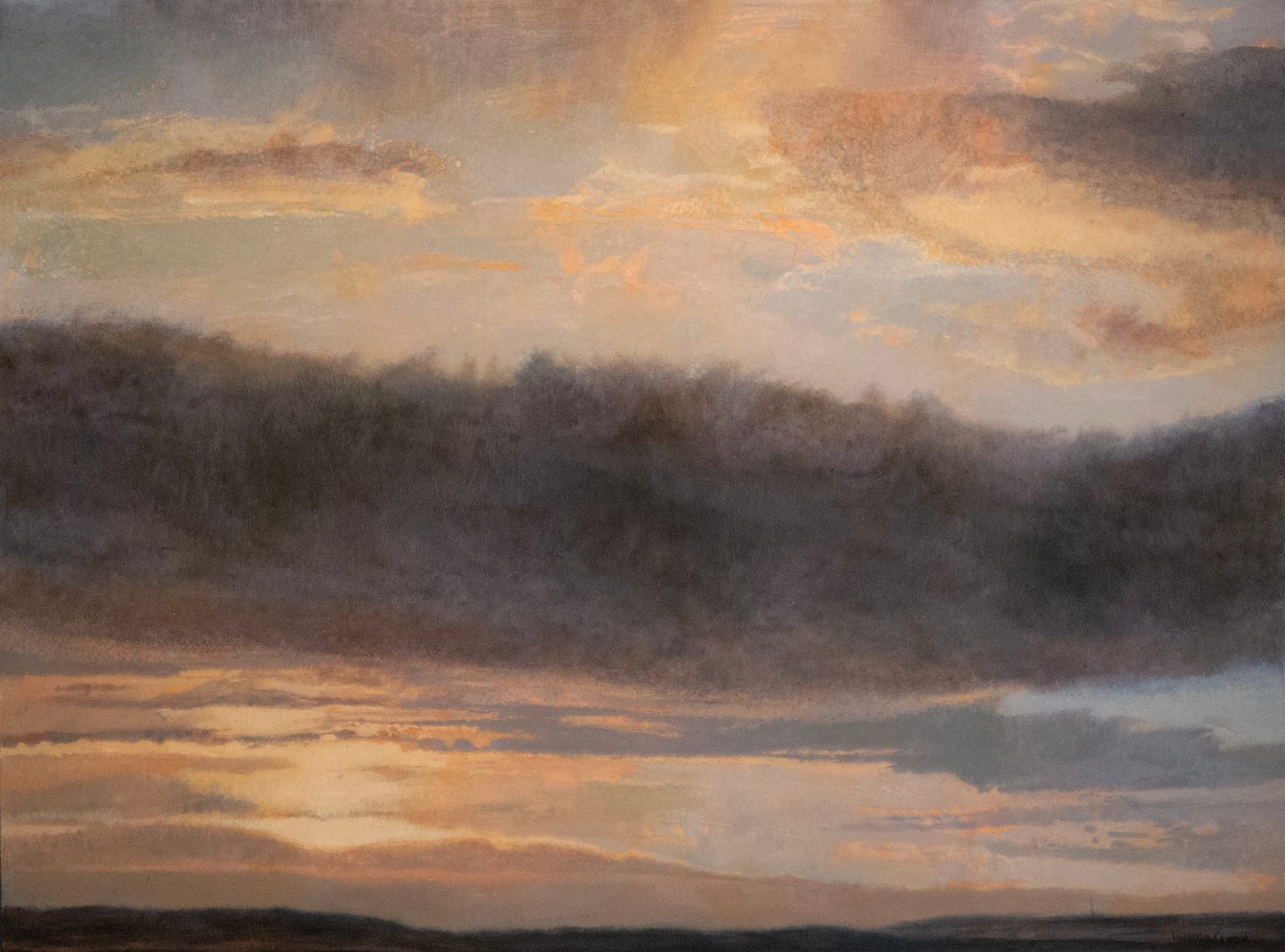
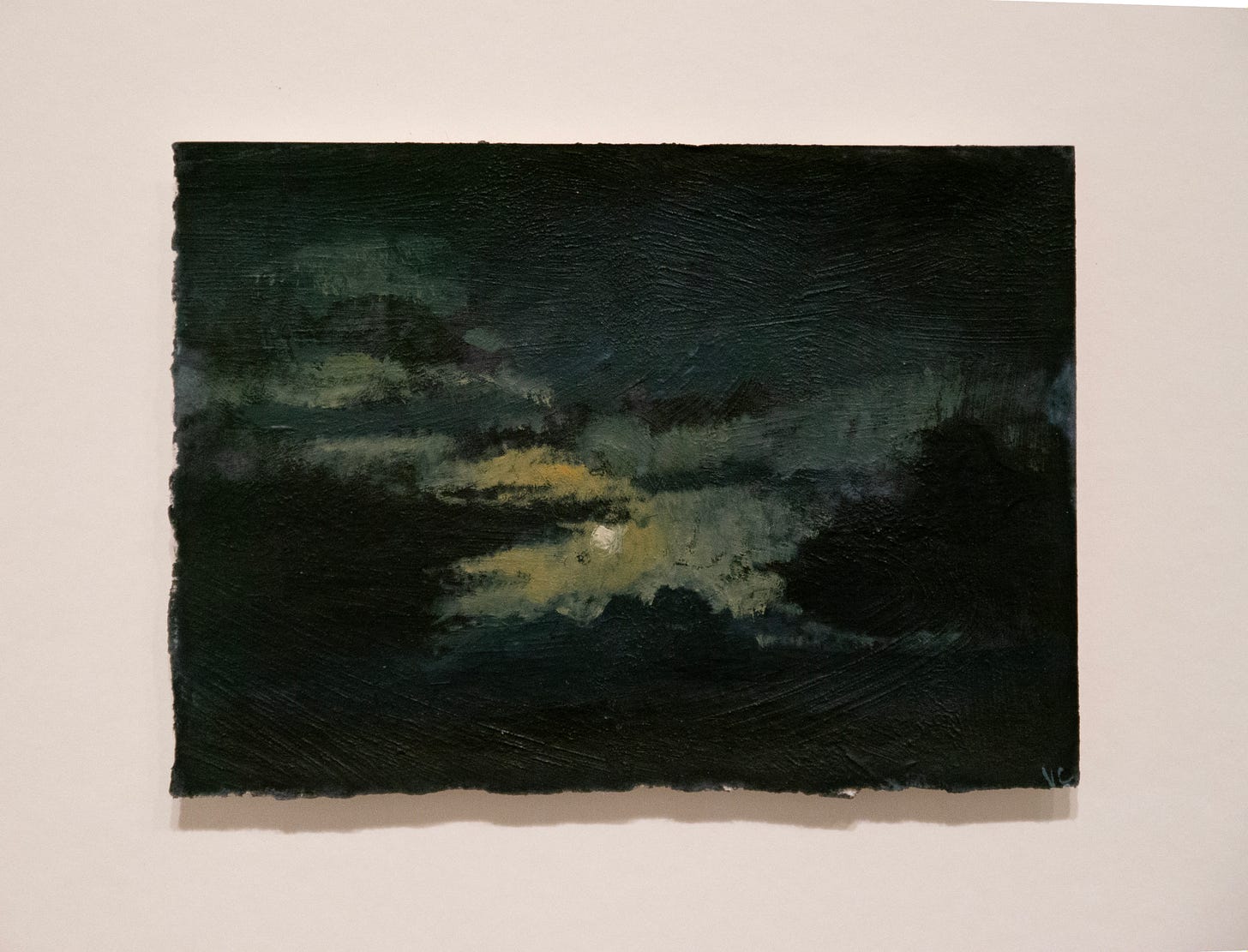
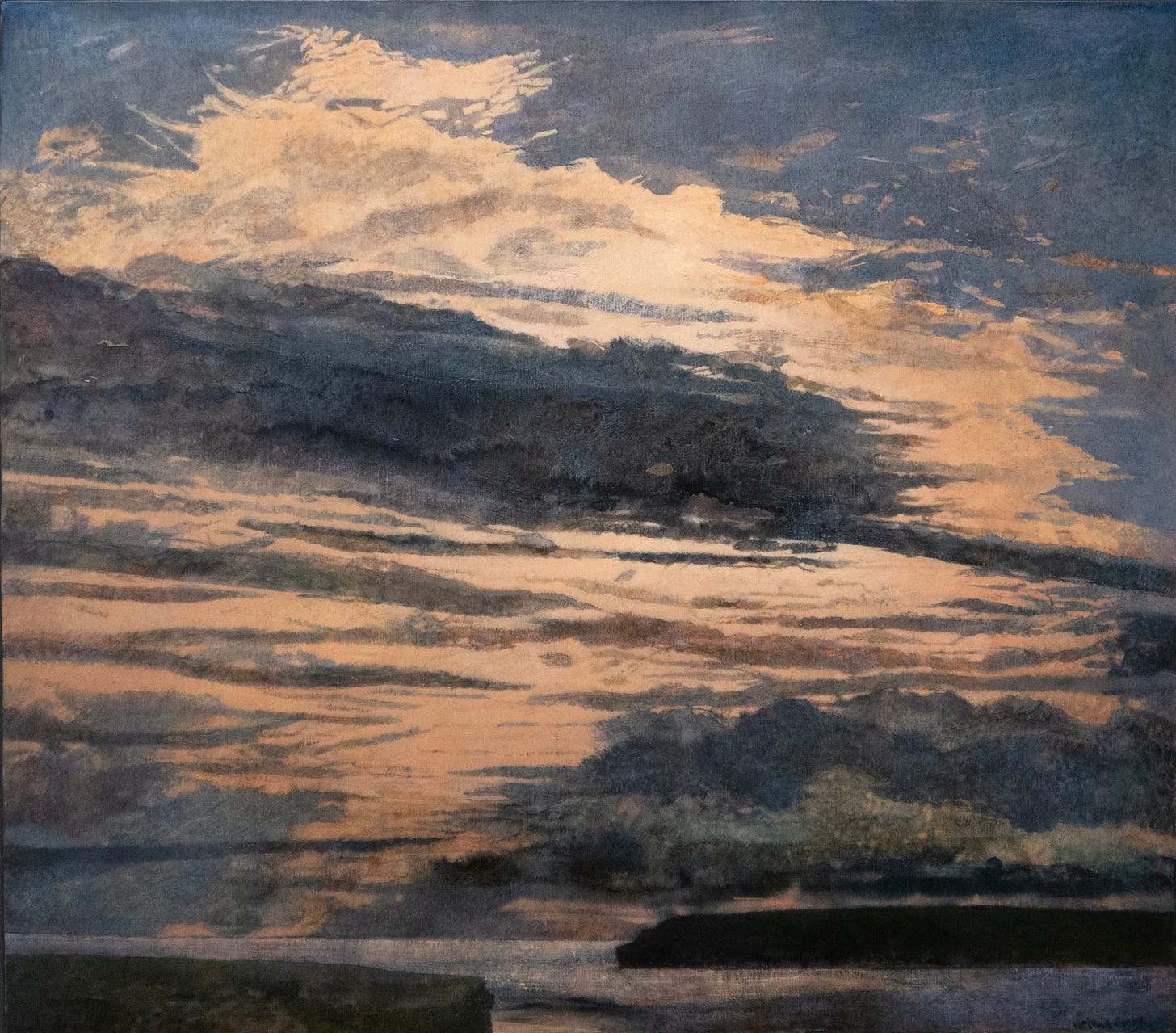
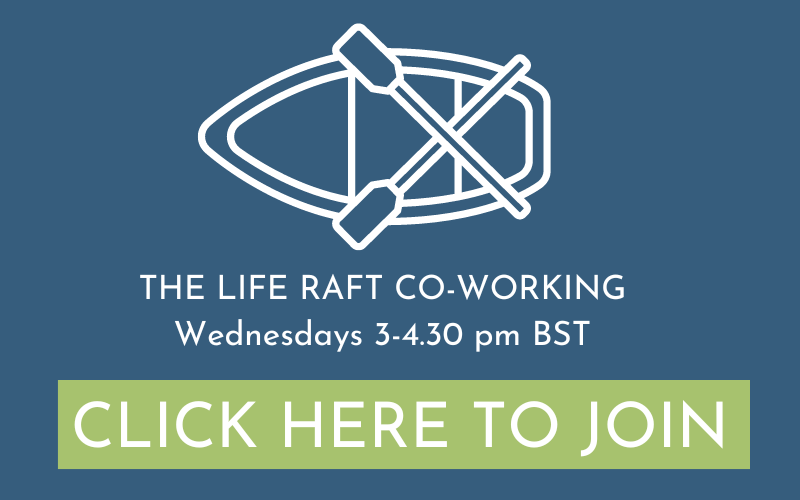
Beautiful descriptive writing about these paintings, and thank you for the beautiful poem. I saw some of her Orkney work at the Scottish Gallery in Edinburgh last year, not long after I’d returned from Orkney. People may like to know that there is a video by the Scottish gallery of Victoria making the print Burnished by a low winter sun. The link is easy to find - I think it’s now on utube. I so enjoy reading your weekly musings.
There’s something so poignant/evocative about horizons. And especially at sunset/sunrise. ✨